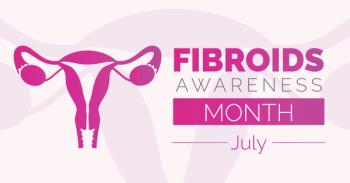
Minimally invasive treatments for uterine fibroid bleeding
A systematic review of minimally invasive treatments for uterine fibroid-related bleeding found that myomectomy can improve overall bleeding symptoms in nearly all patients.
A systematic review of minimally invasive treatments for uterine fibroid-related bleeding in the journal Reproductive Services found that myomectomy can improve overall bleeding symptoms in nearly all patients; however, there was no significant difference between the mode of myomectomy.1
Uterine artery embolization can also significantly reduce fibroid-related bleeding, with symptomatic improvement in 79% to 98.5% of patients, according to some studies.
Other studies indicate that embolization might be superior to myomectomy in reducing fibroid-related bleeding.
Laparoscopic uterine artery occlusion combined with myomectomy greatly decreases bleeding compared to myomectomy alone, according to some studies, while other studies concluded that there was significantly reduced bleeding severity after radiofrequency ablation (RFA).
“Uterine fibroids are associated with significant patient-reported health disabilities, such as bodily pain, mental and emotional health, social functioning, diminished sexual function, and increased urinary/defecatory issues,” said senior author Bhuchitra Singh, MD, MPH, researcher and research program manager in the Division of Reproductive Sciences and Women’s Health Research at Johns Hopkins University School of Medicine.
Fibroid-related heavy menstrual bleeding contributes to increased anxiety, feeling of helplessness, and depression, according to Singh.
“The emergence of various minimally invasive surgical techniques for uterine fibroids that are uterus preserving has increased the flexibility of treatment options for patients seeking relief from symptomatic uterine fibroids,” Singh told Contemporary OB/GYN.“Therefore, our research team wanted to evaluate and compare the efficacy of these treatment options and its impact on heavy menstrual bleeding in a systematic and scientific method.”
The authors conducted a comprehensive search of English-language publications in PubMed, Embase, PsycINFO, ClinicalTrials.gov, Scopus, and Cochrane Library databases from inception to July 2020.
A total of 84 studies were included in the review, comprised of 10 randomized controlled trials and 74 observational studies.
“Hysteroscopic and laparoscopic myomectomy are superior to abdominal myomectomy because of decreased postoperative pain, shorter hospital stays, and comparable long-term outcomes, including pregnancy rates and fibroid recurrence rates,” said Singh. “However, comparison of newer techniques such as radiofrequency ablation (RFA) and magnetic resonance imaging-guided focused ultrasound surgery (MRgFUS) to myomectomy did not demonstrate a significant difference in the reduction of fibroid-related bleeding.”
The research team hopes that their systematic review becomes a source of easy reference for both healthcare providers and patients to have a discussion about the treatment options available for management of symptomatic uterine fibroids. “We performed assessment of risk of bias for all of the included literature, thereby only including the best quality data in our review,” said Singh.
The decision to choose one procedure over the other needs a prudent discussion between the patient and doctor, according to Singh. “The good news is that with the availability of multiple treatment options, gynecologic doctors can now offer more personalized care plans, based on the needs of the patient,” he said.
Nonetheless, there are still advances to be made in understanding and reducing potential side effects. “Also, more research is required to evaluate the efficacy and safety of combining these minimally invasive procedures,” said Singh.
Combining surgical options and medical therapies, like oral gonadotropin-releasing hormone (GnRH) antagonists and selective progesterone receptor modulators, is an area to explore as well.
“The goal should be to develop treatment protocols that correctly identify the target patient population for the specific treatment modality, thus offering both uterus preservation and possibly better future fertility,” said Singh.
Disclosure:
Singh reports no relevant financial disclosures.
Reference:
1. Zhang J, Go VA, Blanck JF, et al. A systematic review of minimally invasive treatments for uterine fibroid-related bleeding. Reprod Sci. Published online September 3, 2021. doi:10.1007/s43032-021-00722-z
Newsletter
Get the latest clinical updates, case studies, and expert commentary in obstetric and gynecologic care. Sign up now to stay informed.










